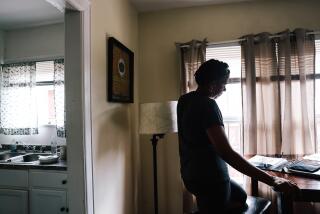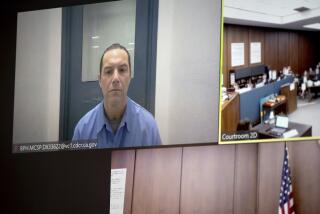Five decades after San Diego woman was raped and strangled, DNA and genealogy lead to an arrest
The killer kicked in the door. The young mother fought hard. Neighbors heard screams.
When Mary Scott missed work the next day — Nov. 20, 1969 — a friend went to her neatly kept City Heights apartment. She found furniture overturned, chairs flipped, an ashtray smashed.
Scott was nude on the living room floor, her nightgown ripped off. She had been raped and strangled.
It was dark outside when two detectives in suits knocked on the door of her family’s Clairemont home, just shy of 51 years ago. Scott’s sister Rosalie Sanz, a teenager at the time, said her parents accepted the tragic news and abruptly closed the door on the men.
Sanz is now 67. Over the weekend, she received news that left her “beyond thrilled”: A suspect was in custody.
San Diego police announced Tuesday that they’d arrested a 75-year-old Pennsylvania man on suspicion of murder in Scott’s killing. John Sipos was taken into custody Saturday at his home in Schnecksville, not far from Allentown on the eastern side of the state.
Sipos remained jailed Tuesday in Pennsylvania’s Lehigh County and was awaiting extradition to San Diego County. His attorney, John Waldron, said he is still evaluating how to address the extradition matter and has not yet met Sipos in person. The Pennsylvania-based attorney said the jail’s COVID-19 precautions mean that his client — who he said has medical concerns, including diabetes and three previous heart attacks — faces a three-week quarantine.
Police say Scott’s killer left behind DNA evidence. That, coupled with forensic genealogy, helped lead them to Sipos.
Forensic genealogy, or genetic genealogy, has become a go-to method for frustrated cold-case detectives since 2018, when investigators used it to identify the Golden State Killer.
Genealogists try to match crime-scene DNA to relatives of the unknown perpetrator using publicly accessible DNA databases. A hit helps them create family trees in hopes of putting a name to the mystery DNA.
San Diego police have had success with the sleuthing method before: In March 2019, detectives announced that they had solved the 1979 killing of Barbara Becker, a La Jolla woman slain during a midday burglary gone awry. Her young sons came home from school and found her body. In the Becker case, the suspect died in the mid-1990s.
Police did not disclose many details about the Scott case, but Sanz said she was told that in 1969, Sipos was living in San Diego and had recently gotten out of the Navy when Scott was killed.
“This guy got to live 51 years free and easy,” Sanz said, “and she got those 51 years taken from her.”
In the mid-1960s, Scott married at 17 and had two girls. Within a few years, she had separated from her husband, a Navy sailor from Louisiana.
The San Diego native worked as a cocktail waitress and later as a go-go dancer at Star and Garter, a club three blocks from her bottom-floor apartment on 39th Street near University Avenue. Finding child care was difficult, so she eventually left her young girls with her husband’s family.
Scott’s youngest daughter, Donna M. Wyble, is now 55. She has one memory of her mother: being in a small bed in the apartment and seeing a cardboard fireplace, presents and a Christmas tree.
Wyble’s older sister, Christine, died in 1993 in a car crash. She was 25 and the mother of two boys.
Wyble said news of an arrest in her mother’s killing left her “totally in shock.”
“It’s unreal, because it’s so many years that we wanted this solved,” said Wyble, who still lives in Louisiana. “I wish my sister was here to see it.”
Scott was the oldest of six siblings. Sanz was the baby of the family — Scott always called her “Pumpkin” — and is the only surviving sibling. Their parents have died.
“Everyone loved her,” Sanz said of her slain sister. “She was very sweet and big-hearted and kind of naïve for the world she was living in.”
Sanz said she had been reading stories about how DNA and genealogy could help catch killers, and around the 50th anniversary of her sister’s death, she reached out to a friend in law enforcement to help get her sister’s folder to the top of the cold-case pile.
“It’s good for families not to give up,” Sanz said.
Figueroa writes for the San Diego Union-Tribune.
More to Read
Updates
6:57 p.m. Oct. 27, 2020: This story was updated with comment from defense attorney John Waldron.
Start your day right
Sign up for Essential California for news, features and recommendations from the L.A. Times and beyond in your inbox six days a week.
You may occasionally receive promotional content from the Los Angeles Times.







